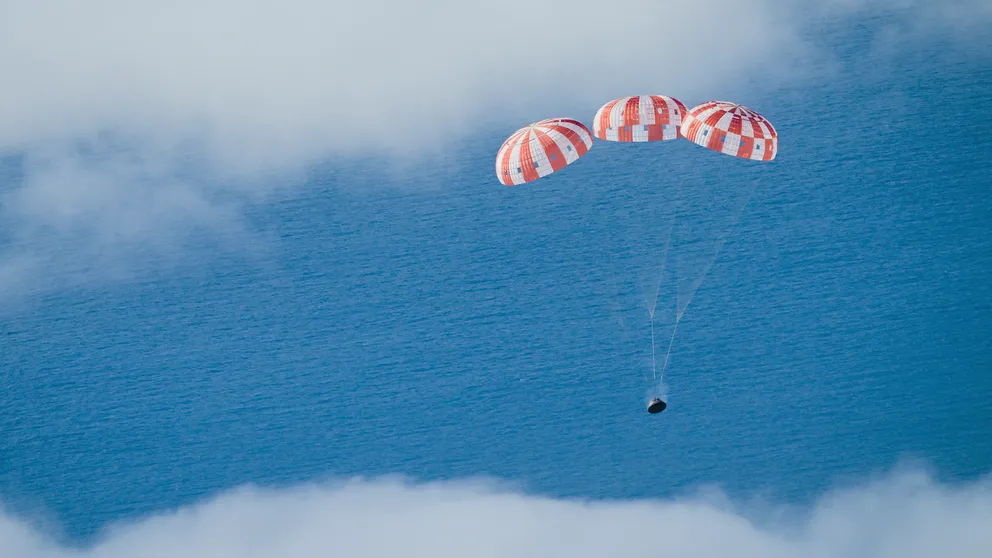Moon mission complete, Orion spacecraft begins road trip back to Kennedy Space Center
With the spaceflight over, there is still a lot to learn from the Artemis 1 test flight, the maiden voyage of Orion and NASA's Space Launch System rocket.
Artemis 1 mission: Relive Orion's historic journey to the moon and back to pave way for future astronaut missions
On December 11, the successful splashdown of the Orion spacecraft in the Pacific Ocean marked the end of the Artemis 1 mission.
After completing a 1.4 million-mile journey in space around the moon, NASA's Orion spacecraft will complete the final leg of its journey by sea and land.
Orion splashed down in the Pacific Ocean off the coast of Mexico on Sunday, ending the nearly 26-day Artemis 1 test flight and paving the way for an astronaut launch in the next two years.
U.S. Navy and NASA teams scooped up the spacecraft and brought it onboard the USS Portland. Orion arrived at the U.S. Navy Port of San Diego on Tuesday.

NASA’s Orion spacecraft for the Artemis I mission was successfully recovered inside the well deck of the USS Portland on Dec. 11, 2022 off the coast of Baja California. After launching atop the Space Launch System rocket on Nov. 16, 2022 from the agency’s Kennedy Space Center in Florida, Orion spent 25.5 days in space before returning to Earth, completing the Artemis I mission. (Image: NASA)
(NASA)
With the spaceflight over, there is still a lot to learn from the Artemis 1 test flight, the maiden voyage of Orion and NASA's Space Launch System rocket.
NASA’s Associate Administrator for Exploration Systems Development Jim Free said the capsule was being prepared for transport back to Kennedy Space Center in Florida, where it launched on its moon mission on Nov. 16.
After the spacecraft is offloaded from USS Portland on Thursday, Orion will be transported cross-country, arriving in a few weeks.
Orion program manager Howard Hu said NASA worked with the Department of Transportation to plan to spacecraft's route back to Florida.
Once back at KSC, engineers will closely examine the spacecraft's heatshield, which protected Orion from 5,000-degree temperatures as it blasted through Earth's atmosphere.
The "moment of truth for Orion" was a crucial objective in the Artemis 1 test flight, proving whether the spacecraft heat shield could protect future astronauts returning home from the moon.
Kennedy Space Center Director Janet Petro said she looks forward to having Orion back at the Florida spaceport.
"We will bring it back into the processing facility, take out the remaining payloads and de-service it, and then take a really good look at the heat shield and see how that system performs," Petro said.

NASA’s Orion spacecraft for the Artemis I mission was successfully recovered inside the well deck of the USS Portland on Dec. 11, 2022 off the coast of Baja California. After launching atop the Space Launch System rocket on Nov. 16, 2022 from the agency’s Kennedy Space Center in Florida, Orion spent 25.5 days in space before returning to Earth, completing the Artemis I mission. (Image: NASA)
(NASA)
Artemis I Mission manager Mike Sarafin said engineering teams would also review the data from Orion's journey around the moon, including its return to Earth, which included two expected communication blackouts and a skip reentry method.
During the skip reentry, Orion bounced off the Earth's atmosphere before coming back in for its splashdown.
HISTORY MADE: NASA'S MOON ROCKET ROARS TO LIFE LAUNCHING ON ARTEMIS 1 TEST FLIGHT
According to Sarafin, the spacecraft experienced its hottest temperatures during one of the blackout periods.
"We need to go look at the flight data recorders and see what the flight recorders told us or will tell us after we get that off the vehicle," Sarafin said.
Another Orion spacecraft is already at KSC being readied for Artemis II when two NASA astronauts will complete the same journey around the moon and back in late 2024.
